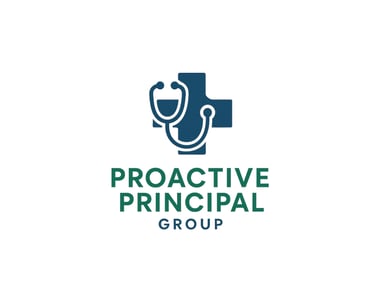New AI Liability Standards: California's new AI laws could impact your practice. Don't fly blind. Click to read the Blog & get the Free AI Risk Strategy Checklist
Decoding California's AI Blueprint: A Practical Guide for Every Doctor
The future of medicine is here, and it's powered by AI. With no national regulation and oversight, California's recent AI legislation is an AI Blueprint for healthcare AI regulation that safeguards patients and empower providers.
11/19/20256 min read


The future of medicine is here, and it's powered by AI. From smarter diagnostics to streamlined administrative tasks, artificial intelligence promises to transform how we deliver care. But as rapidly as AI advances, so too does the need for thoughtful regulation. That's why the recent AI legislation passed in California in September 2025 – particularly the Transparency in Frontier Artificial Intelligence Act (TFAIA, or SB 53), alongside healthcare-specific bills like SB 1120 and AB 3030 – is a game changer.
While these are California laws, I believe they offer a crucial blueprint for every state. As the owner of Proactive Principal Group and legal professional, my job is to help healthcare professionals navigate the complex intersection of innovation and risk. And make no mistake - AI is the single biggest operational and legal shift our generation of physicians will ever face. This is bigger than the EHR/EMR audit trail fight we've seen in recent years.
AI is not just a new tool. It's a new "partner" in the exam room, and it comes with a mountain of legal exposure that no one is considering or talking about. Instead, everyone is in an AI "arms-race".
This is why every doctor needs to pay attention to what just happened in California.
Let's unpack why these laws matter to you.
The Warning Shot from California
In September 2025, California passed SB 53 known as the Transparency in Frontier Artificial Intelligence Act (TFAIA). With this law, California becomes the first state in the nation to establish a comprehensive legal framework to ensure transparency, safety, and accountability in the development and deployment of AI models. California previously passes AI healthcare-specific bills like SB 1120 and AB 3030 governing mandatory disclosure to patients when AI is used in patient communications and human review in utilization review. This legislative package is a crystal ball, a comprehensive AI blueprint, showing us where healthcare AI regulation is headed.
These laws establish three principles that will, and should, become the standard to proactively prevent harm:
Human Judgment is Sacred: At their core, these laws emphasize that AI is a "tool" and not a replacement for human judgment. AI can suggest, but a licensed human must decide.
Transparency & Auditing: No more "black box" algorithms. California is enforcing AI developers and users to understand and take responsibility for their algorithms. You need to know how your AI tool works, what data they were trained on, and where they might be flawed.
Clear Accountability & Informed Consent: The "AI did it" defense is dead on arrival. When something goes wrong, the responsibility won't magically disappear. Patients have a right to know when AI is involved in their care.
Here in Georgia, like many states, lawmakers are already exploring AI legislation (e.g., HB 887 for insurance decisions). The tide is turning. By adopting California's framework now, you can get ahead of the curve, build resilient practices, and ensure patient trust. You aren’t just complying with future laws. You are fundamentally protecting your license, your practice, and your patients.
A Proactive Framework: What This Means for Your Practice
California's framework for practicing medicine safely in the age of AI rests on 3 critical pillars that every physician, from solo practitioner to hospital executive, should implement.
Pillar 1: Your Clinical Judgment is Non-Negotiable
The Takeaway: AI can suggest, but a licensed human must always make the final medical decision.
CA Context (SB 1120): This law explicitly prevents AI from independently denying utilization review requests. A human doctor must make the final call.
For Every Doctor: This is your shield. Your clinical judgment and autonomy are being legally reinforced. You are the provider, not the algorithm's supervisor. Your oversight is non-negotiable.
For Practice Owners: You must create a formal, written policy stating that no final clinical decision (diagnosis, treatment plan, medication order, or medical necessity denial) can be made solely by an AI. A human provider must sign off.
The Risk: Relying solely on an AI for a clinical decision, without independent, human verification, could be seen as an abandonment of professional judgment, exposing you to significant malpractice risk and potential disciplinary action from the Medical Board.
Pillar 2: You Can't Be Ignorant of the "Black Box"
The Takeaway: You need to know how your AI tools work, what data they were trained on, and where they might be flawed. Ignorance is NOT bliss, and you have a responsibility as an AI user.
CA Context (TFAIA/SB 53): Requires AI developers to audit their systems and disclose risk assessments concerning bias and potential for harm.
For Practice Owners: "We didn't know the tool was biased" is not a defense. Before you buy any AI-powered tool, your due diligence is your first line of defense. Demand information. You must ask the vendor:
Training Data: "What data was this trained on?" Could it biased against certain demographics relevant to your patient base? (If it wasn't trained on a population that looks like your patients, you have a massive problem.)
Performance Metrics: "Show me your bias and safety audits." What are your error rates and under what conditions?
Risk Assessments: "What is your protocol for when the AI model 'drifts' or makes an error?" Ask for developer's safety and bias audit reports.
The Risk: AI models can "drift" or develop new biases over time. Your practice should have a plan to periodically audit the performance of your AI tools, especially those impacting patient care. If you do not, your practice could be on the hook for discriminatory care.
Pillar 3: Transparency is Your Best Insurance Policy
The Takeaway: When something goes wrong, the responsibility won't magically disappear. Patients also have a right to know when AI is involved in their care.
CA Context (AB 3030): This is the most practical, patient-facing change. This law requires clear disclaimers for AI-generated patient communications. This is your key to managing liability.
I urge my clients to adopt a Two-Level Consent Model:
Level 1: The Disclaimer (for Low-Risk AI)
What it is: AI scribes, AI-powered chatbots for scheduling, or AI-generated billing summaries.
What you must do: Provide a simple, clear disclaimer.
Example (for a chatbot):"You are speaking with an AI assistant. For any medical concerns, please call our office to speak with a human."
Example (for an AI scribe in-room): "I use an AI assistant to help with my notes so I can give you my full attention. It only records our conversation for the chart. Are you comfortable with that?"
Level 2: The Informed Consent (for High-Risk Clinical AI)
What it is: AI-powered diagnostics (reading scans, analyzing skin lesions) or AI-recommended treatment plans.
What you must do: This is a full, documented informed consent conversation, just like for a procedure. Patients have the right to opt-out and proceed without AI assistance.
Example script: "I'm recommending we use an AI tool to help analyze your [X-ray]. It acts as a second set of eyes and is excellent at catching subtle things. However, it's not perfect. I will personally review its findings, along with your full history, and I will make the final diagnosis. Do you have any questions and do I have your permission to proceed?"
Incident Reporting: Establish an internal system for reporting AI "near-misses" or errors. This allows you to learn and adapt before harm occurs.
The Risk: Lack of transparent communication or failure to obtain proper consent regarding AI's role in clinical decisions (e.g., destruction of patient trust) can lead to patient complaints, malpractice claims, and investigations by licensing boards.
Your Proactive To-Do List for Every Doctor (Beyond Practice Owners)
This is a "this week" priority. This isn't just for the big hospitals. Every doctor, regardless of practice size, needs to consider these steps:
For ALL Doctors:
Educate Yourself: Stay informed about AI in medicine and emerging regulations. Attend webinars, read journals, connect with peers, and follow Proactive Principal Group.
Inventory Your AI Tools: Do you use an AI scribe? Does your EMR have AI-driven features? Identify every tool you use or plan to use. Assess their risk profile.
Document Your Oversight: Get in the habit of writing one extra sentence in your note: "AI-assist reviewed; findings confirmed/overruled. Final diagnosis based on clinical judgment." This is your legal armor.
For Practice Owners & Leaders:
Convene Your "AI Governance Committee" (Even if it's just you and your practice manager).
Update Your Consent Forms (Today). Add language for both Level 1 and Level 2 consent.
Draft Your Vendor Questionnaire (This Week). Start with the questions I listed in Pillar 2 above. Do not sign another vendor contract without it. Follow up with your current vendor.
Create Your AI "Human Oversight" Policy (This Month).
For Everyone:
Communicate with Patients: Be open and honest about AI's role in their care and follow the two-tiered consent model outlined above.
Seek expert guidance: Don't go it alone. Consult with a consultant or legal professional who understands both healthcare law and AI ethics.
Looking Ahead: A Call to Action
The rapid integration of AI into healthcare presents unprecedented opportunities, but also novel risks. We must balance efficiency versus exposure. California has given us a robust starting point for navigating this complex landscape. By embracing these principles, healthcare providers can continue to deliver exceptional, safe, and ethical care, protecting both their patients and their professional standing.
At Proactive Principal Group, our entire mission is to keep leaders like you ahead of the curve, protecting your practice by focusing on first principles. The future of medicine is here, and it demands our proactive leadership and engagement. Let's ensure that as we innovate, we do it safely, ethically, and with our eyes wide open.
If you would like to receive our AI Risk Strategy Checklist, please sign up here: https://ppgconsultants.com/ai-risk-strategy-checklist
Stay safe, stay informed, and let's navigate this exciting frontier together.
© 2025. All rights reserved. | Proactive Principal Group, LLC | Disclaimer | Privacy Policy | Terms of Service


info@ppgconsultants.com
Monday - Thursday: 9am - 5pm
Friday: 9am - 3pm
Mailing Address: 1445 Woodmont Ln, NW # 715, Atlanta, GA 30318
Proactive. Strategic. Empowered.
Your physician's advocate and navigator. We help you move with clarity. Let us protect your license and livelihood.
678-203-8704
Contact Us
